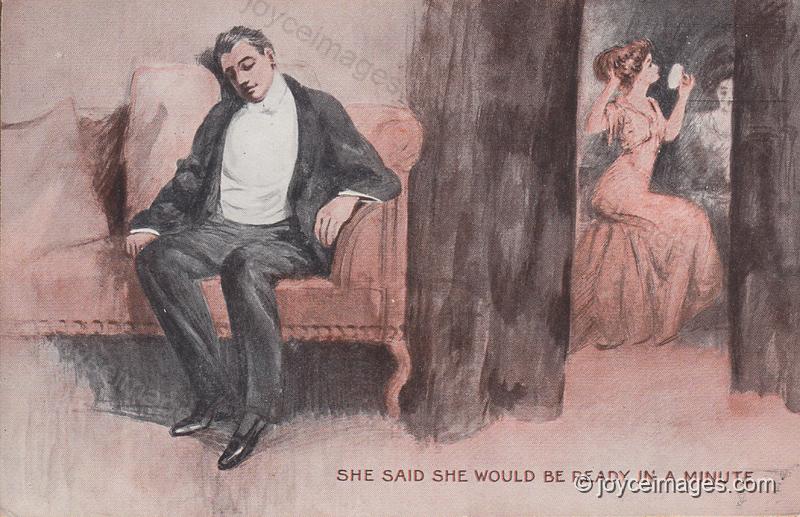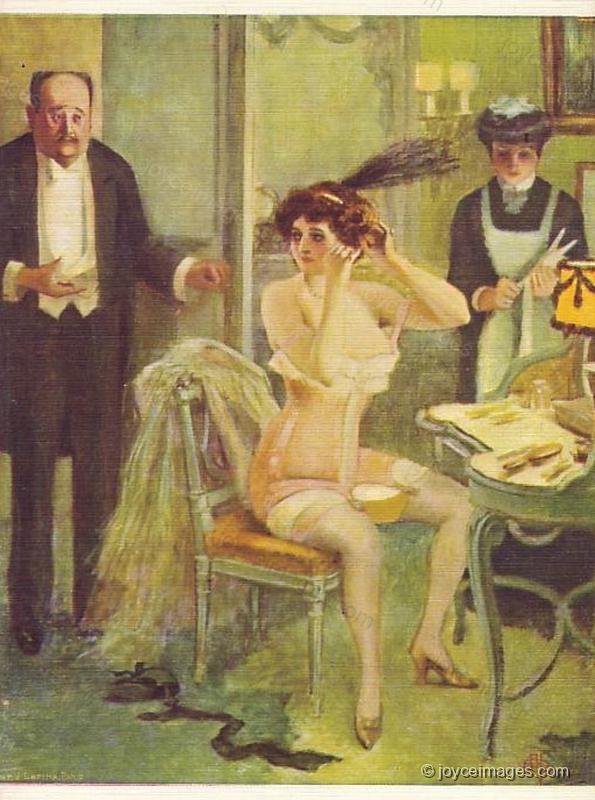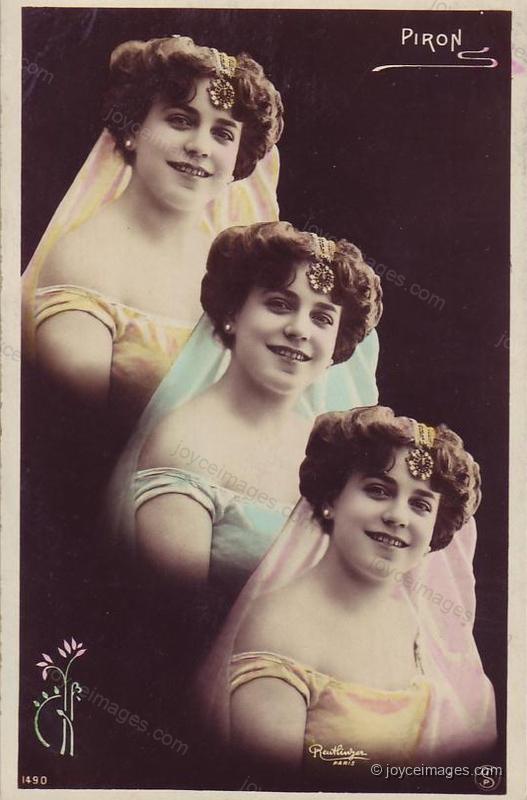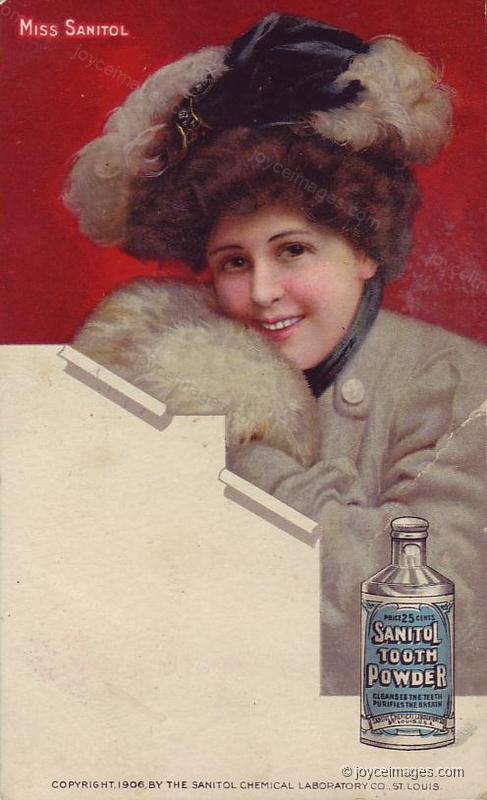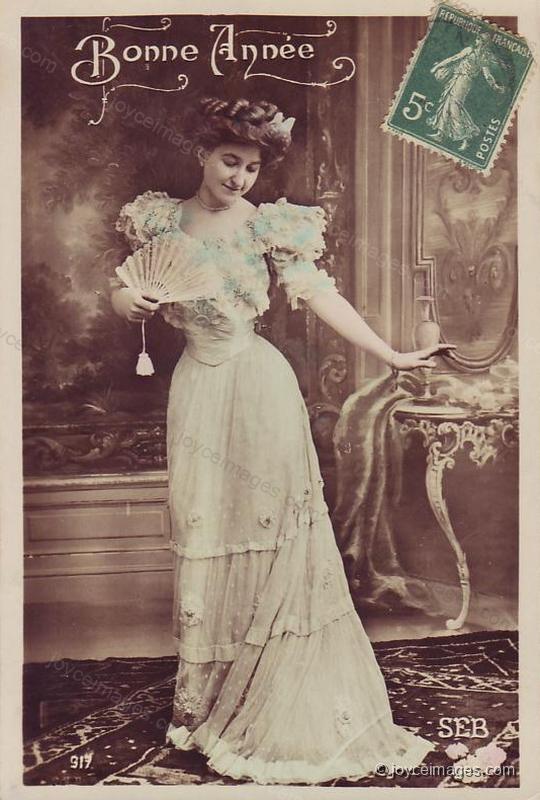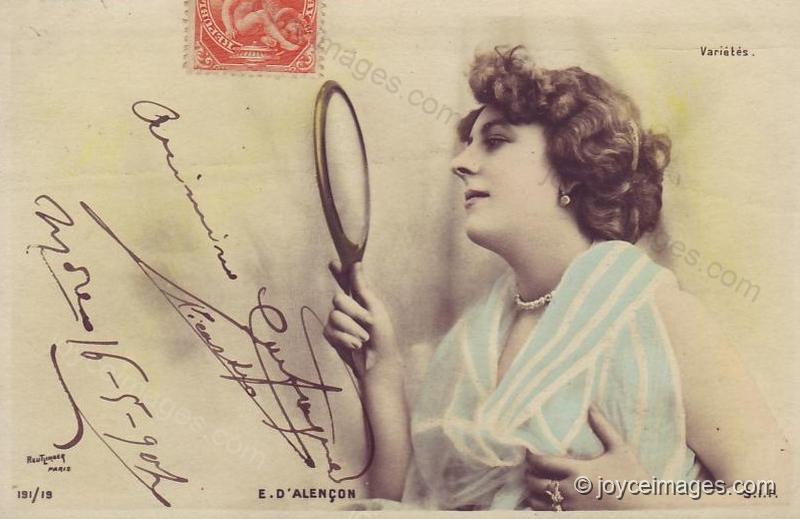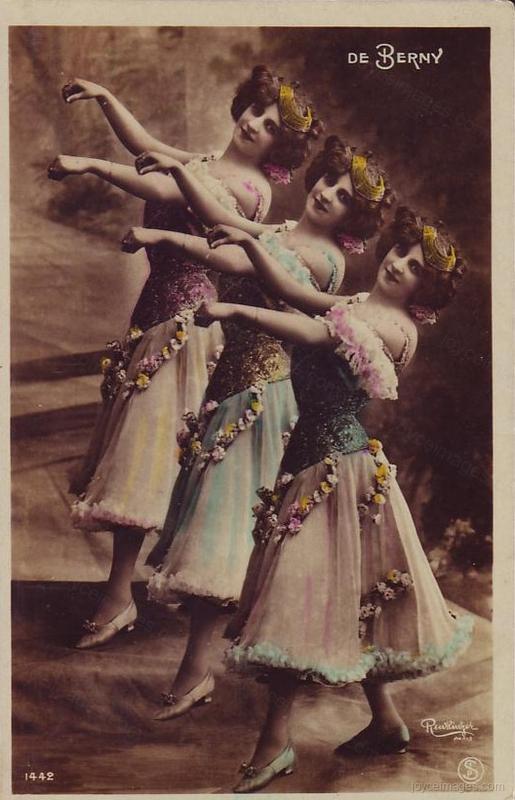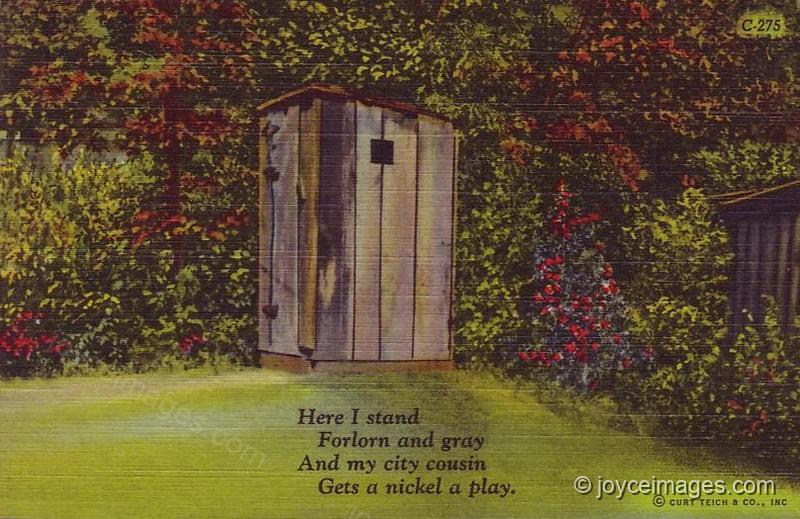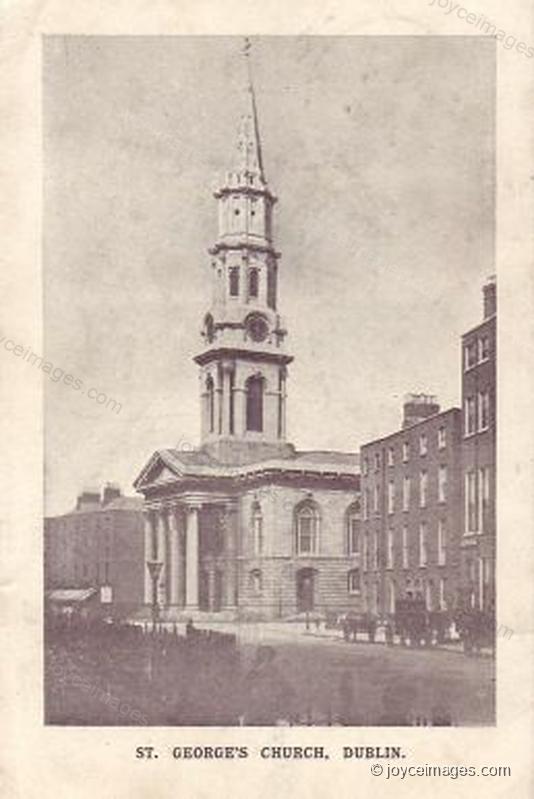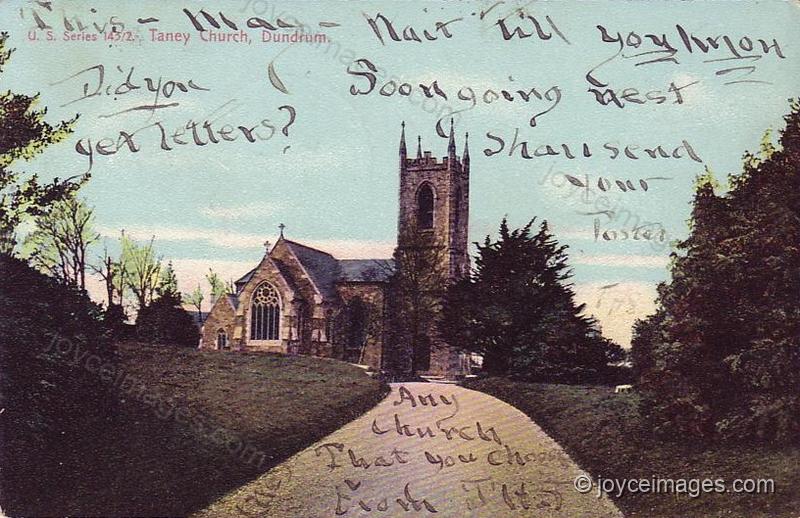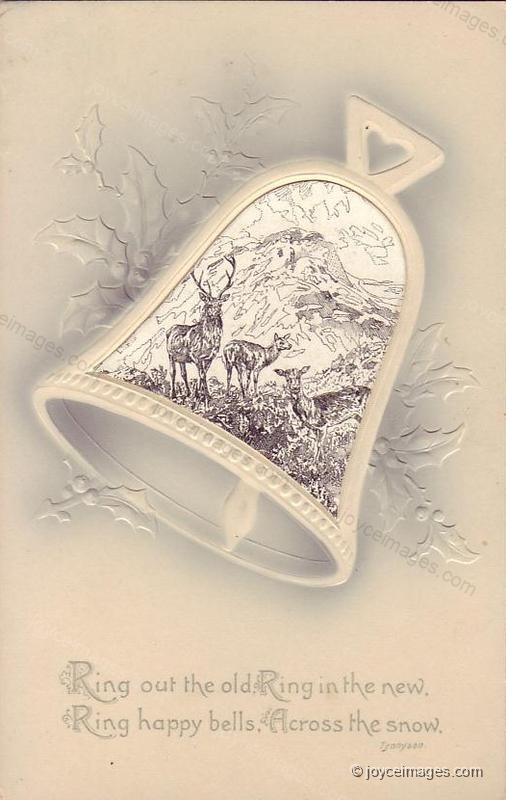"Dislike dressing together. Nicked myself shaving. Biting her nether lip, hooking the placket of her skirt. Timing her." (U4.520)
"9.15. Did Roberts pay you yet? 9.20. What had Gretta Conroy on? 9.23. What possessed me to buy this comb? 9.24. I'm swelled after that cabbage. A speck of dust on the patent leather of her boot: rubbing smartly in turn each welt against her stockinged calf." (U4.521)
"Morning after the bazaar dance when May's band played Ponchielli's dance of the hours. Explain that: morning hours, noon, then evening coming on, then night hours." (U4.525)
"That was the first night. Her head dancing. Her fansticks clicking. Is that Boylan well off? He has money. Why? I noticed he had a good rich smell off his breath dancing. No use humming then. Allude to it. Strange kind of music that last night." (U4.528)
"The mirror was in shadow. She rubbed her handglass briskly on her woollen vest against her full wagging bub. Peering into it. Lines in her eyes. It wouldn't pan out somehow." (U4.531)
"Evening hours, girls in grey gauze. Night hours then black with daggers and eyemasks. Poetical idea: pink, then golden, then grey, then black. Still, true to life also. Day: then the night." (U4.534)
"He tore away half the prize story sharply and wiped himself with it. Then he girded up his trousers, braced and buttoned himself. He pulled back the jerky shaky door of the jakes and came forth from the gloom into the air.
In the bright light, lightened and cooled in limb, he eyed carefully his black trousers: the ends, the knees, the houghs of the knees. What time is the funeral? Better find out in the paper." (U4.537)
In the bright light, lightened and cooled in limb, he eyed carefully his black trousers: the ends, the knees, the houghs of the knees. What time is the funeral? Better find out in the paper." (U4.537)
"A creak and a dark whirr in the air high up. The bells of George's church. They tolled the hour: loud dark iron.
Heigho! Heigho!
Heigho! Heigho!
Heigho! Heigho!" (U4.544)
From a Dublin Guidebook 1905: "The peal of [St George's] bells is said to be the most musical in Ireland, eclipsing even the celebrated bells of Shandon." The bells, 8 in number, were a gift, in 1828, from the architect Francis Johnston who designed the church. Johnston and his wife Anne lived on Eccles street. They wanted to encourage campanology within the parish, then the largest Anglican parish in the Diocese of Dublin, and to which they belonged.
Heigho! Heigho!
Heigho! Heigho!
Heigho! Heigho!" (U4.544)
From a Dublin Guidebook 1905: "The peal of [St George's] bells is said to be the most musical in Ireland, eclipsing even the celebrated bells of Shandon." The bells, 8 in number, were a gift, in 1828, from the architect Francis Johnston who designed the church. Johnston and his wife Anne lived on Eccles street. They wanted to encourage campanology within the parish, then the largest Anglican parish in the Diocese of Dublin, and to which they belonged.
P.S. When George's church closed in 1990, the bells were put in storage. They were later moved to Christ Church in Taney, and came alive again January 1st 2000.
"Quarter to. There again: the overtone following through the air. A third.
Poor Dignam!" (U4.549)
To learn more about what Bloom is hearing, see the excellent article Heigho, the Bells of St George's by Eamonn Finn in the James Joyce Online Archive.
Poor Dignam!" (U4.549)
To learn more about what Bloom is hearing, see the excellent article Heigho, the Bells of St George's by Eamonn Finn in the James Joyce Online Archive.
